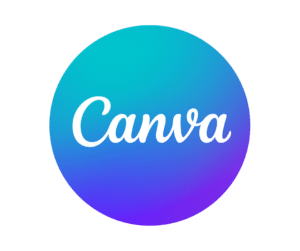On my podcast, I consistently remind my listeners that successful businesses are built on understanding and fulfilling genuine market demands. Whether I’m interviewing industry experts or sharing my own insights, the message remains clear: to thrive in today’s competitive landscape, entrepreneurs must prioritize customer-centric approaches and constantly seek ways to better serve their target audience.
There is no better example of this than the story of Melanie Perkins, founder of Canva.
Back in the day, designing eye-catching visuals was a skill reserved for the pros. Complex, expensive software like Adobe Photoshop, Illustrator, and InDesign held the creative reigns, leaving the rest of the world feeling overwhelmed and intimidated
Melanie Perkins, a young Australian teacher, witnessed this frustration firsthand. As she guided students through the labyrinthine interfaces of these design giants, a simple question emerged: Couldn’t design be easier and more accessible?
This question would become the seed of what we now know as Canva.
In 2007, Melanie and her partner Cliff Obrecht took their first step into the world of design software with Fusion Books, a platform for creating school yearbooks. But Melanie’s vision was much grander. She saw a world where anyone, regardless of their design skills, could create beautiful graphics with ease.
The road from idea to reality was far from smooth. For three long years, Melanie pitched her concept to over 100 investors, facing rejection after rejection. But she refused to give up. “I didn’t take ‘no’ for an answer,” Melanie recalls. “I just kept going and kept fighting for the vision.”
The breakthrough came when Melanie shifted her pitching strategy. Instead of focusing solely on the product, she began leading with the problem Canva aimed to solve. “A lot of people can relate to going into something like Photoshop and being completely overwhelmed,” she explained. This relatable approach finally resonated with investors, and Canva received its first funding.
In 2012, Melanie and Cliff teamed up with tech expert Cameron Adams to officially launch Canva. The platform’s user-friendly interface and vast library of templates quickly gained traction, allowing users to create everything from social media posts to business presentations with unprecedented ease.
From these humble beginnings, Canva has grown into a global phenomenon.
Today, it boasts 60 million users across 190 countries, with a valuation exceeding $39 billion. But for Melanie, the numbers are secondary to the impact. “The best products don’t always win; the ones that people can understand and use the fastest tend to win,” she observes.
Melanie’s journey offers valuable insights for aspiring entrepreneurs:
- Identify real problems: Canva was born from a genuine need Melanie observed in her teaching work.
- Persist in the face of rejection: Over 100 “nos” couldn’t deter Melanie from her vision.
- Refine your pitch: Success came when Melanie learned to communicate her idea more effectively.
- Focus on user experience: Canva’s intuitive design has been key to its widespread adoption.
- Think globally: From the start, Canva was designed to serve a diverse, international user base.
- Embrace continuous innovation: Canva constantly evolves, adding new features and capabilities.
- Lead with purpose: Melanie’s commitment to democratizing design drives Canva’s mission.
Beyond Canva’s success, Melanie has become a beacon for aspiring entrepreneurs, particularly women in tech. She actively supports initiatives to empower female founders and promote diversity in the startup ecosystem. “Being a female founder is a point of difference,” she says, “but it’s not the only thing that defines you.”
Melanie Perkins didn’t set out to build a tech giant. She just wanted to solve a problem that bugged her – and millions of others. It turns out, that’s the secret sauce of truly revolutionary businesses.

When Perkins looked at her frustrated students battling complex design software, she didn’t see just a market opportunity. She saw a chance to unlock creativity for everyone who’d ever felt overwhelmed by a blank canvas or intimidated by Photoshop’s endless toolbars.
This genuine concern for user experience wasn’t just good business sense—it was Canva’s heartbeat from day one. And boy, did it pay off.
Today, Canva is the go-to design tool for 60 million people worldwide, from small business owners to global marketing teams.
But the real magic? It’s in the countless ideas brought to life, the small businesses that look more professional, the students who aced their presentations.
Perkins’ story reminds us that the best businesses don’t just make money – they make a difference. By starting with empathy and stubbornly pursuing a solution to a real need, she didn’t just disrupt an industry. She democratized design itself.
So if you’re dreaming up a business idea, take a page from Perkins’ book.
Look around. Listen. What frustrates people? What could be simpler, faster, more accessible?
That nagging problem might just be your billion-dollar opportunity. And more importantly, it could be your chance to change the world, one user at a time.

